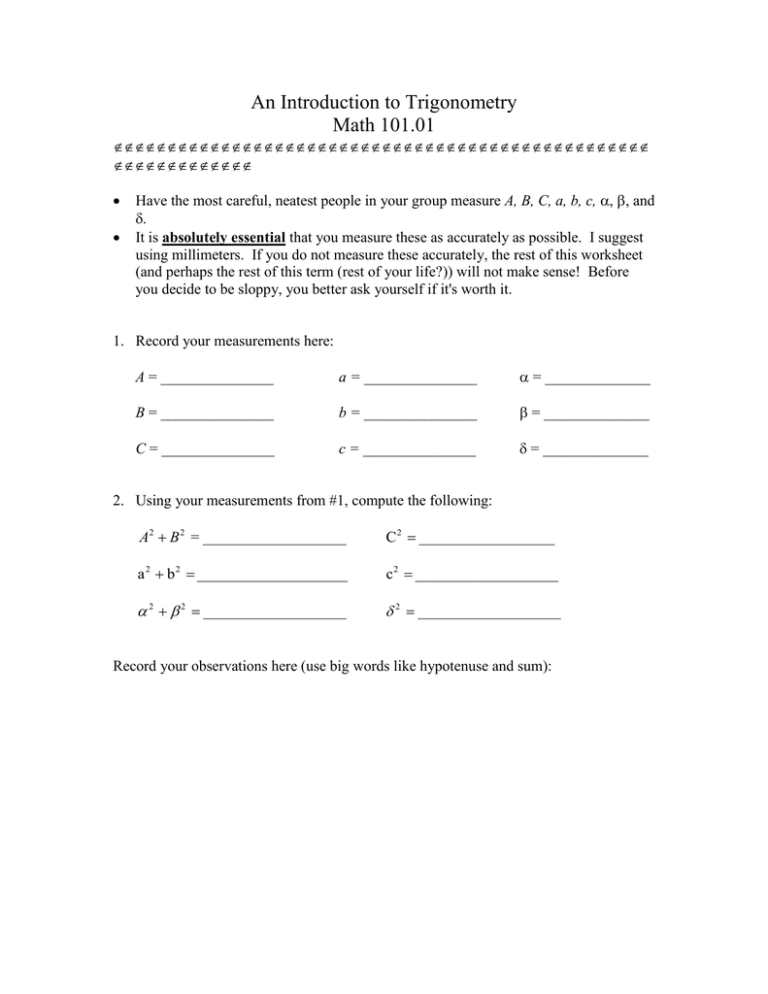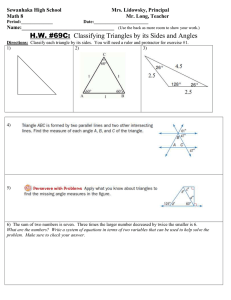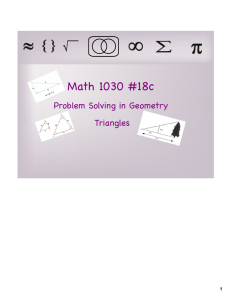An Introduction to Trigonometry Math 101.01
advertisement

An Introduction to Trigonometry Math 101.01 Have the most careful, neatest people in your group measure A, B, C, a, b, c, , , and . It is absolutely essential that you measure these as accurately as possible. I suggest using millimeters. If you do not measure these accurately, the rest of this worksheet (and perhaps the rest of this term (rest of your life?)) will not make sense! Before you decide to be sloppy, you better ask yourself if it's worth it. 1. Record your measurements here: A = _______________ a = _______________ = ______________ B = _______________ b = _______________ = ______________ C = _______________ c = _______________ = ______________ 2. Using your measurements from #1, compute the following: A2 B 2 = ___________________ C 2 __________________ a 2 b 2 ____________________ c 2 ___________________ 2 2 ___________________ 2 ___________________ Record your observations here (use big words like hypotenuse and sum): 3. Using your measurements from #1, compute the following ratios: A ___________________ B a ___________________ b ___________________ 4. Compute the following ratios: A ___________________ C a ___________________ c ___________________ 5. Compute the following ratios: B ___________________ C ___________________ Record your observations below: b ___________________ c Notice that the angles opposite sides A, a, and are equal. You can observe this by placing the triangles on top of each other. Similarly the angles opposite sides B, b, and are equal. Lastly, the angles opposite the sides C, c, and are equal. Triangles that have the same set of angles are called "similar triangles" or "congruent triangles." The 3 triangles you've been given are, therefore, similar triangles. Suppose you were given a fourth triangle that is similar to the other three and suppose further that somebody had written the letters A, B, and C on the triangle on the appropriate sides. What sort of predictions can you make about A, B, and C? List your predictions below: You may have noticed that the 3 triangles you were given are each right triangles (a right triangle is a triangle in which one of the angles is 90 (in your triangles, the angle opposite the side labeled C, c, and is 90)). What do you think would happen if you hadn't been given right triangles? How many of the results you discussed above do you think would still be valid? Discuss your feelings below:


